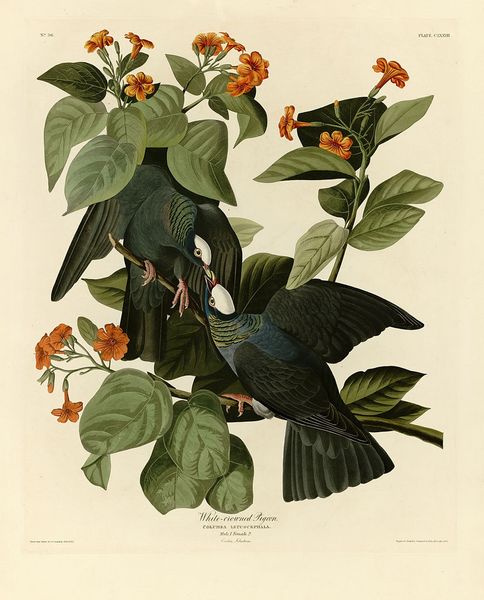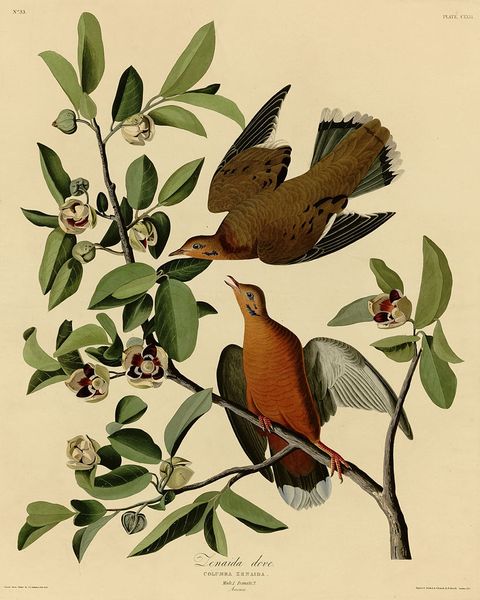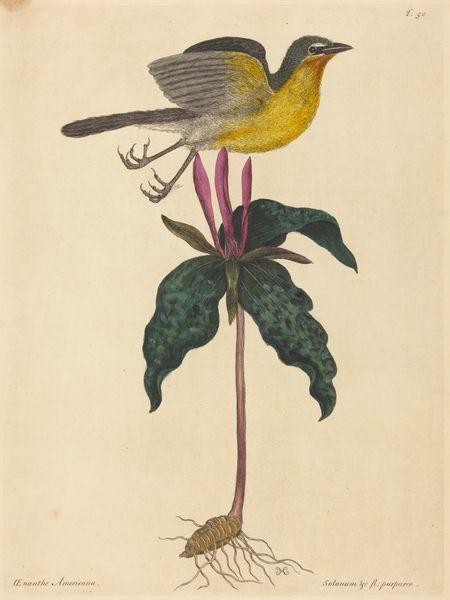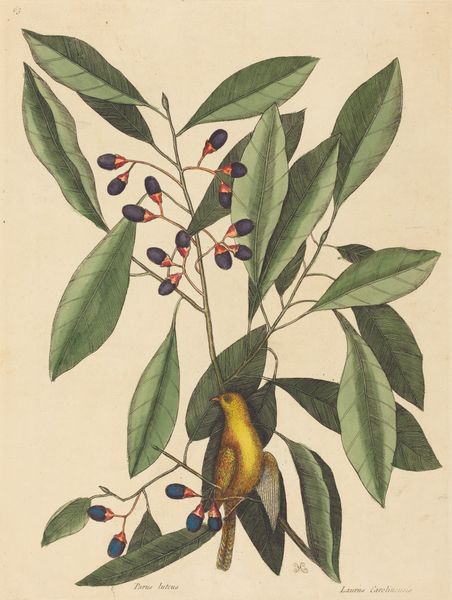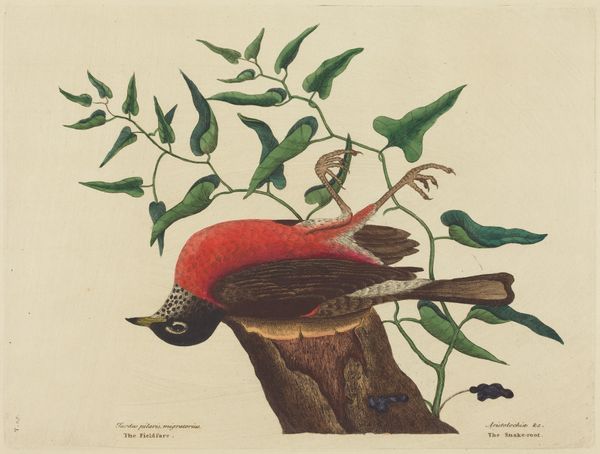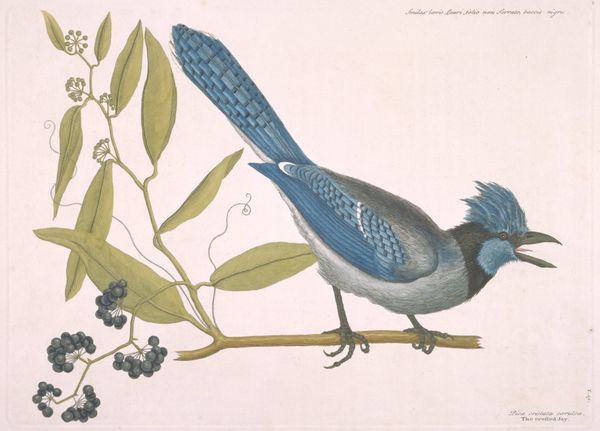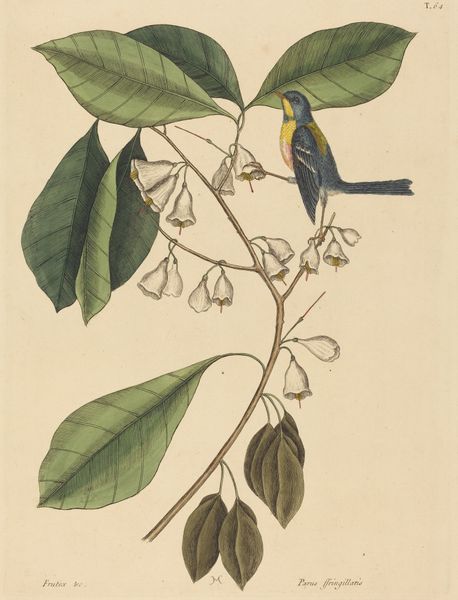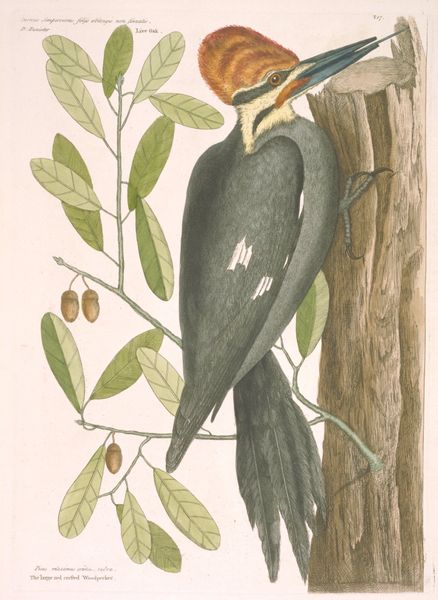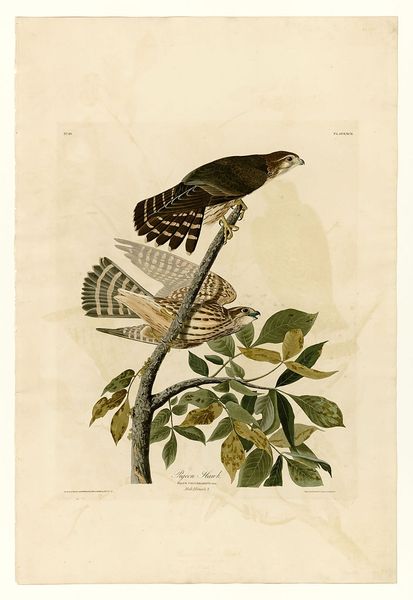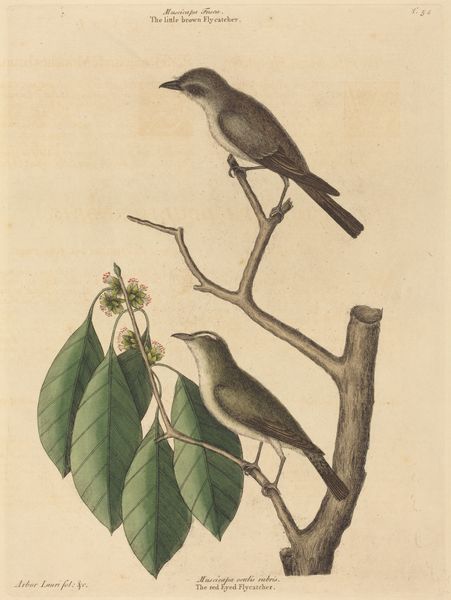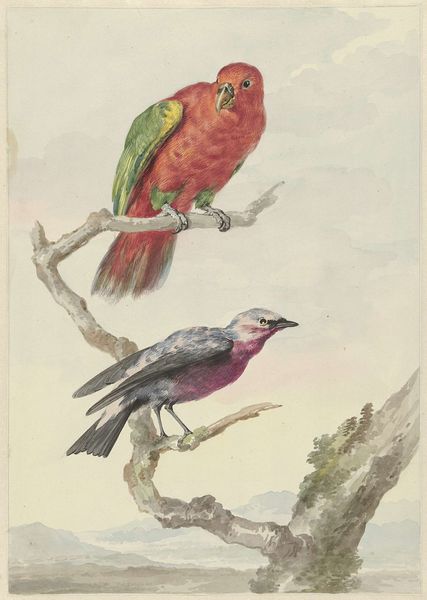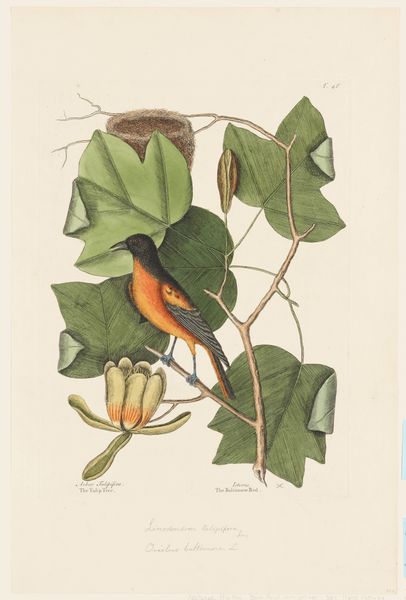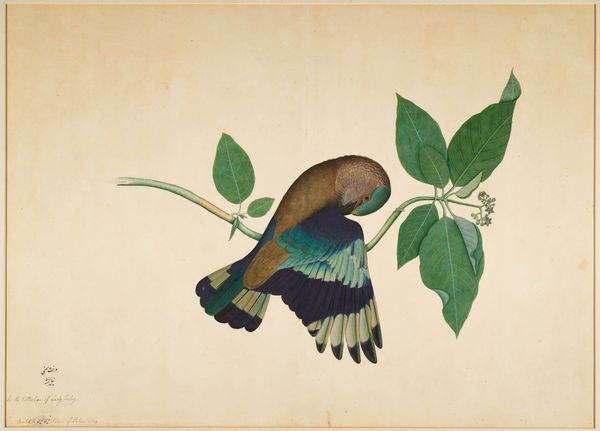
drawing, print, watercolor, pencil
#
drawing
# print
#
landscape
#
watercolor
#
pencil drawing
#
pencil
#
watercolour illustration
#
naturalism
#
botanical art
#
watercolor
Dimensions: plate: 26.5 x 35.4 cm (10 7/16 x 13 15/16 in.) sheet: 30.8 x 42.9 cm (12 1/8 x 16 7/8 in.)
Copyright: National Gallery of Art: CC0 1.0
Editor: This print, possibly from 1754, is called "The Red Winged Starling" by Mark Catesby. It seems to be done in watercolor, pencil and possibly other printmaking techniques. The red and yellow "epaulettes" really pop out at you. What do you see in this piece? Curator: Well, first, let's observe the formal elements. Notice how Catesby uses line to meticulously define the bird's feathers and the leaves. The contrast between the stark black of the bird and the muted greens of the foliage creates a visually arresting composition, wouldn't you agree? How does that striking color contrast strike you? Editor: Yes, the sharp contrast is very eye-catching, and makes it a very dynamic composition! It also highlights how important those colours of the Starling's wing markings must be. The level of detail seems pretty special too, almost hyper-realistic for a watercolour, but do you think that it distracts the viewer away from some greater idea? Curator: Not at all! That level of realism speaks directly to the function and intrinsic quality of the work as scientific illustration. This is not just art for art's sake, but also scientific documentation. Consider the work's emphasis on shape, form, and precise representation. Does it serve a purpose beyond mere aesthetics? How is it successful in fulfilling its illustrative function? Editor: Ah, I see. So the details aren't just decorative, they are informative. It becomes less about the symbolic and more about the exact representation of the physical world? That gives a new perspective! Curator: Precisely! By stripping away layers of meaning beyond that within the piece itself, we may truly appreciate the intrinsic elements of colour, line, and form as vehicles for communicating scientific observation. So much detail can show an artist's purpose! Editor: Thanks, that’s a useful viewpoint and an intriguing perspective to keep in mind!
Comments
No comments
Be the first to comment and join the conversation on the ultimate creative platform.
